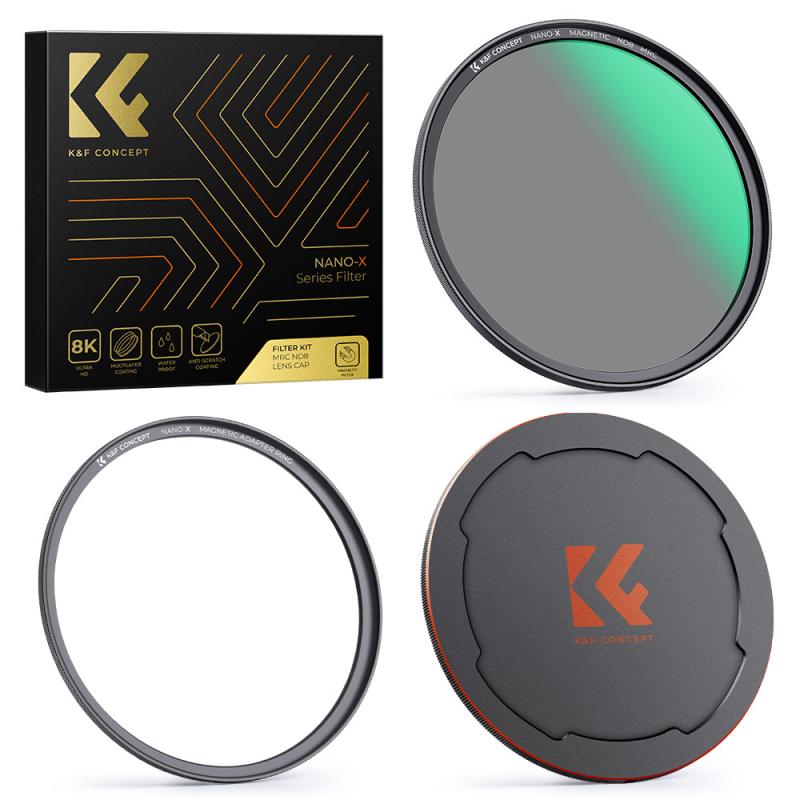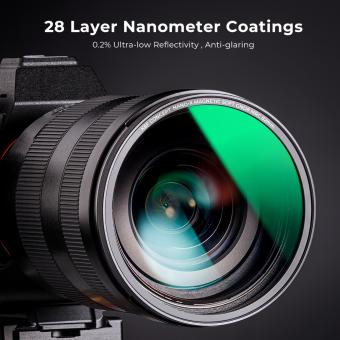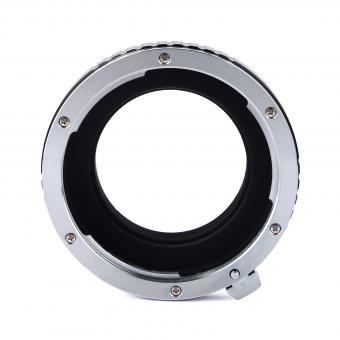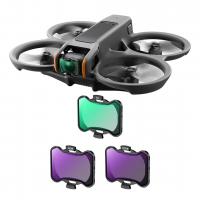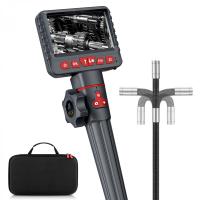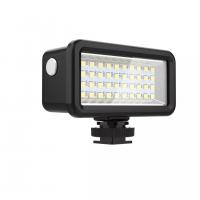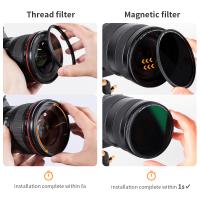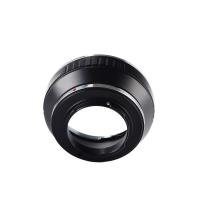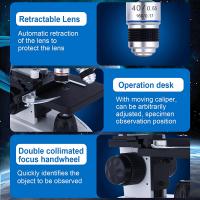What Filter For My Lens ?
The type of filter you should use for your lens depends on the specific needs and preferences of your photography. There are various types of filters available, each serving a different purpose. Some common types include UV filters, polarizing filters, neutral density filters, and color filters. UV filters are primarily used to protect the front element of your lens and reduce haze. Polarizing filters help to reduce reflections and enhance colors, especially in landscapes and outdoor photography. Neutral density filters are useful for controlling the amount of light entering the lens, allowing for longer exposures or wider apertures in bright conditions. Color filters are used to add or modify colors in your images. It is important to choose a filter that is compatible with the diameter of your lens, so make sure to check the filter thread size before purchasing.
1、 Types of lens filters for photography
Types of lens filters for photography have evolved over the years, offering photographers a wide range of options to enhance their images. Filters are essential tools that can be attached to the front of a camera lens to modify the light entering the camera, resulting in various creative effects.
One of the most commonly used filters is the UV filter, which primarily serves as a protective layer for the lens. It helps reduce haze and protects the lens from scratches, dust, and moisture. However, with advancements in lens coatings and the use of high-quality glass, the necessity of UV filters has become a topic of debate among photographers. Some argue that modern lenses already have sufficient protection, while others still prefer to use UV filters for added peace of mind.
Another popular type of filter is the polarizing filter. This filter reduces glare and reflections, making it ideal for landscape photography. It enhances color saturation and contrast, resulting in more vibrant and dramatic images. Polarizing filters are particularly useful when shooting scenes with water or glass, as they can eliminate unwanted reflections and reveal the true colors beneath.
Neutral density (ND) filters are essential for long exposure photography. These filters reduce the amount of light entering the camera, allowing for longer shutter speeds even in bright conditions. ND filters are commonly used to create motion blur in waterfalls, rivers, or clouds, giving images a dreamy and ethereal look.
Graduated neutral density (GND) filters are another valuable tool for landscape photographers. These filters have a gradient that transitions from dark to clear, allowing photographers to balance the exposure between the bright sky and the darker foreground. GND filters help capture a more balanced and evenly exposed image, especially during sunrise or sunset when the sky is significantly brighter than the landscape.
In recent years, the popularity of creative filters, such as color filters and diffusion filters, has grown. Color filters can add a specific color cast to an image, enhancing the mood or creating a unique atmosphere. Diffusion filters, on the other hand, soften the image, creating a dreamy and romantic effect. These filters can be particularly useful for portrait photography, adding a touch of softness and glow to the subject.
As technology advances, some photographers argue that the need for physical lens filters is diminishing. With the advent of powerful post-processing software, many effects that were traditionally achieved through filters can now be replicated digitally. However, there are still certain effects that are best achieved in-camera, such as long exposures or reducing glare, making lens filters an indispensable tool for many photographers.
In conclusion, the types of lens filters available for photography offer a wide range of creative possibilities. From UV filters for protection to polarizing filters for reducing glare, and from ND filters for long exposures to GND filters for balancing exposure, each filter serves a specific purpose. While the rise of digital post-processing has impacted the use of filters, there are still effects that are best achieved in-camera. Ultimately, the choice of filters depends on the photographer's style, preferences, and the desired outcome for their images.

2、 Popular lens filters and their effects
Popular lens filters and their effects can greatly enhance your photography by adding creative effects and improving image quality. The choice of filter depends on the desired effect and the type of photography you are engaged in. Here are some commonly used lens filters and their effects:
1. UV Filter: This filter primarily serves as a protective layer for your lens, reducing haze and protecting it from scratches. It has minimal impact on image quality and is recommended for all types of photography.
2. Circular Polarizer (CPL) Filter: A CPL filter reduces glare and reflections from non-metallic surfaces such as water or glass. It also enhances color saturation and contrast, making skies appear bluer and clouds more defined.
3. Neutral Density (ND) Filter: ND filters reduce the amount of light entering the lens, allowing you to use slower shutter speeds or wider apertures in bright conditions. This is useful for capturing motion blur in waterfalls or achieving a shallow depth of field in bright sunlight.
4. Graduated Neutral Density (GND) Filter: GND filters have a gradient of darkness, with one half being neutral density and the other half being clear. They are used to balance the exposure between a bright sky and a darker foreground, preventing overexposure of the sky.
5. Infrared (IR) Filter: IR filters block visible light and allow only infrared light to pass through, resulting in surreal and dreamy images with a distinct red or blue hue.
It's important to note that with advancements in post-processing software, some effects can be replicated digitally. However, certain filters like UV and CPL still offer benefits that cannot be easily replicated in post-processing.
As technology evolves, new filters may emerge, catering to specific needs or offering unique effects. It's always a good idea to stay updated with the latest developments in the field of lens filters to make informed choices for your photography.

3、 Choosing the right filter size for your lens
Choosing the right filter size for your lens is an essential aspect of photography that can greatly enhance your images. Filters are used to modify the light entering the lens, allowing you to achieve various creative effects and improve the overall quality of your photos. However, with the wide range of filter sizes available, it can be confusing to determine which one is suitable for your lens.
The first step in selecting the right filter size is to identify the diameter of your lens. This information is usually indicated on the front of the lens or can be found in the lens specifications. Once you have determined the diameter, you can easily choose a filter with the corresponding size.
It is important to note that not all lenses have the same filter size. Different lenses have different diameters, so it is crucial to check the size for each lens you own. Additionally, some lenses may have a larger front element, requiring a larger filter size. In such cases, step-up rings can be used to adapt the filter to fit the lens.
When selecting a filter size, it is also worth considering the future. If you plan on investing in additional lenses, it may be more practical to choose a filter size that is common among your lenses. This way, you can easily interchange filters without the need for multiple sizes.
In recent years, there has been a growing trend towards using larger filters, particularly for landscape and wide-angle lenses. Larger filters allow for better light control and reduce the risk of vignetting, which can occur when using smaller filters on wide-angle lenses. Therefore, if you primarily shoot landscapes or use wide-angle lenses, it may be beneficial to opt for larger filter sizes.
In conclusion, choosing the right filter size for your lens is crucial for achieving the desired effects in your photography. By identifying the lens diameter and considering future lens investments, you can select a filter size that suits your needs. Additionally, considering the latest trend towards larger filters can further enhance your image quality, particularly for landscape and wide-angle photography.
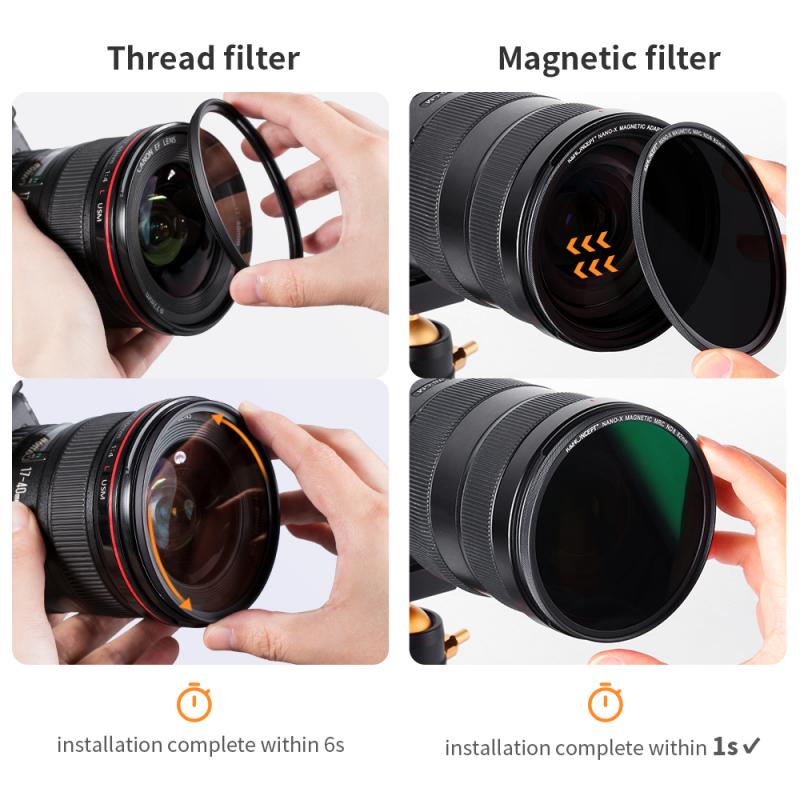
4、 Understanding polarizing filters for lens
Understanding polarizing filters for lenses is essential for photographers looking to enhance their images and control reflections and glare. A polarizing filter is a versatile tool that can significantly improve the quality of your photographs.
A polarizing filter works by selectively blocking certain light waves, reducing reflections and increasing color saturation. It is particularly useful when shooting landscapes, as it can deepen the blue of the sky, make clouds pop, and enhance the colors of foliage and water. Additionally, it can minimize reflections on glass or water surfaces, allowing you to capture clear and vibrant images.
When choosing a polarizing filter for your lens, it is important to consider the size and thread diameter of your lens. Most filters come in different sizes to fit various lenses, so ensure you select the correct size for your specific lens.
There are two types of polarizing filters: linear and circular. Linear polarizing filters are commonly used for manual focus film cameras, while circular polarizing filters are designed for autofocus cameras. Circular polarizers have an additional layer that helps prevent interference with the autofocus and metering systems of modern cameras.
It is worth noting that some lenses, particularly wide-angle lenses, may have a built-in lens hood or a protruding front element that makes it difficult to attach a filter. In such cases, consider using a slim or low-profile filter to avoid vignetting or other unwanted effects.
In recent years, there has been a rise in the popularity of circular polarizing filters with adjustable polarization. These filters allow photographers to rotate the filter to achieve the desired level of polarization, giving them more control over the effect.
In conclusion, understanding polarizing filters for lenses is crucial for photographers who want to enhance their images and control reflections. By selecting the correct size, type, and adjusting the polarization, photographers can achieve stunning and vibrant photographs with reduced glare and enhanced colors.
